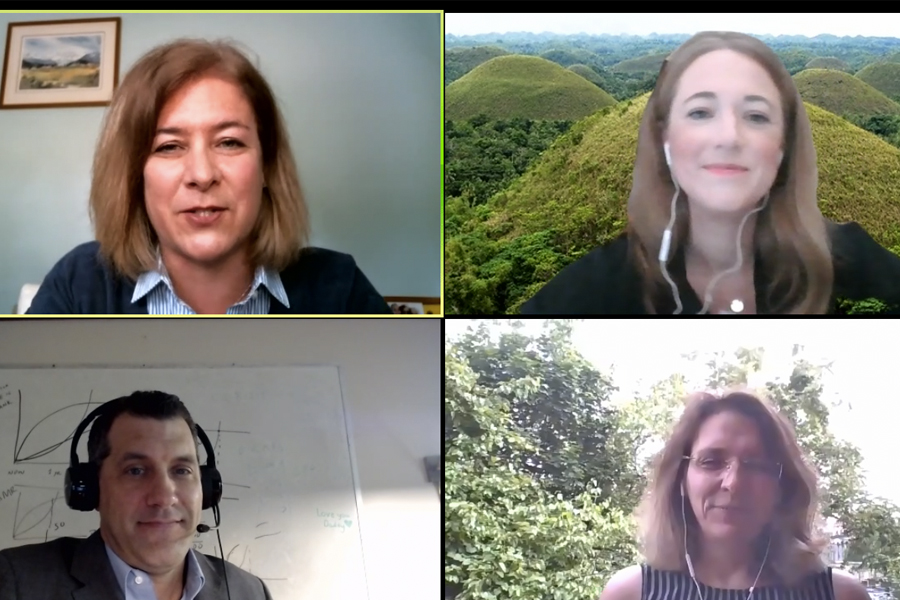
Recovering from COVID-19: Three Energy Systems Experts Offer Insights on Infrastructure Planning
Earlier this month, three energy experts spoke with the Scott Institute community on how social, environmental and technical resiliency frameworks can better prepare our energy systems as we begin to plan for the recovery phases of COVID-19. The panel, part of the Institute’s Energy, Resilience and COVID-19 webinar series, featured:
- Nicholas Muller, associate professor of Economics, Engineering, and Public Policy; Energy Fellow at Carnegie Mellon University;
- Katrina Kelly-Pitou, Economics & Energy Systems strategist at SmithGroup; and
- Karina Ricks, director of the City of Pittsburgh’s Department of Mobility and Infrastructure.
The discussion was moderated by Anna. J. Siefken, executive director of the Scott Institute.
Here are key takeaways from the event:
COVID-19 has impacted infrastructure planning.
Kelly-Pitou said COVID-19 brought attention to the importance of connecting energy systems to the social and environmental impacts that built designs have on the communities that companies construct them in. She said, “It’s important to make sure resilience planning is business as normal, and to internalize externalities that aren’t included in this.”
Muller noted how the crisis revealed the nation’s economic fragility, specifically in energy systems. With a decrease in travel, “For the first time in history, we saw oil futures close in the U.S. in negative territory in April,” he said.
The repercussions: Companies ceased new drilling rigs and workers were laid off.
Short-term effects on energy use, mobility and air quality are evident.
Speaking to his latest working paper with the National Bureau of Economic Research, Muller and collaborators investigated the national effects on air quality given the large and significant changes in mobility primarily through personal vehicle use and reductions in power generation—stemming from stay-at-home policies.
“We found that in large U.S. cities, the reductions in fine particulate matter concentrations have been considerable,” said Muller. “We know from cell phone data that personal mobility was down on the order of 40-50 percent from the beginning of March to the end of April. Power generation on net was down 5-15 percent.”
The researchers learned that this likely reduced nationwide expected premature deaths from air pollution emissions by 350 per month among disadvantaged communities.
There will be lasting effects on digital infrastructure.
Providing digital infrastructure and fiber communications to every corner of the city and making sure residents have the devices they need to use that connectivity is imperative, explained Ricks.
She said, “From a sustainability standpoint, I think we will see much more “podding” of communities within a smaller geographic area of each other where our neighborhoods start to become complete communities again.”